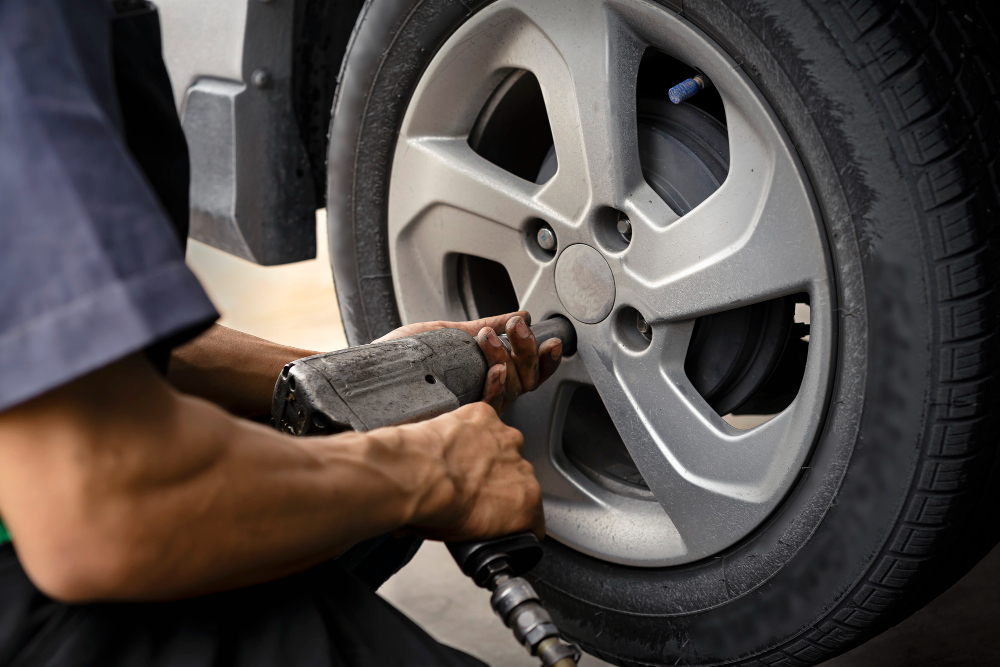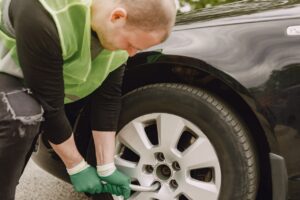Flat tires are a common and frustrating problem that can leave you stranded on the side of the road. Not only are they inconvenient, but they can also be dangerous, especially if you’re driving at high speeds or in adverse weather conditions. At Agile Towing Company, we understand the importance of proper tire maintenance in avoiding flat tires.
In this article, we’ll dive into the essentials of tire care and provide you with practical tips to keep your tires in top shape. By the end of this post, you’ll have a better understanding of how regular tire maintenance can save you from costly repairs and keep you safe on the road. If you ever find yourself in need of mobile flat tire assistance, remember that Agile Towing Company is just a call away at (919) 276-5900.
The Importance of Tire Maintenance
Safety Concerns Associated with Neglected Tires
Your tires are the only point of contact between your vehicle and the road, making them crucial for your safety. Neglected tires can lead to poor traction, longer stopping distances, and an increased risk of blowouts or accidents. By maintaining your tires properly, you can ensure that your vehicle handles well and keeps you and your passengers safe.
Financial Benefits of Proper Tire Maintenance
In addition to safety benefits, regular tire maintenance can also save you money in the long run. Well-maintained tires last longer, which means you won’t have to replace them as often. Moreover, properly inflated and aligned tires can improve your vehicle’s fuel efficiency, saving you money at the gas pump.
Improved Vehicle Performance and Fuel Efficiency
When your tires are in good condition, your vehicle performs better. Properly inflated tires reduce rolling resistance, which means your engine doesn’t have to work as hard to keep your car moving. This not only improves your vehicle’s overall performance but also contributes to better fuel efficiency.
Essential Tire Maintenance Tasks
Checking Tire Pressure
One of the most important aspects of tire maintenance is checking your tire pressure regularly. Underinflated or overinflated tires can lead to uneven wear, decreased performance, and even tire failure. It’s recommended to check your tire pressure at least once a month and before long trips.
Recommended Frequency: To stay on top of your tire pressure, make it a habit to check it at least once a month. You can do this easily at home with a tire pressure gauge or visit a local gas station that offers free air pressure checks.
Proper Tire Pressure Levels: Consult your vehicle’s owner’s manual or the tire information placard located on the driver’s side door jamb to find the recommended tire pressure for your specific make and model. Don’t rely on the maximum pressure listed on the tire sidewall, as this is not the optimal pressure for your vehicle.
Inspecting Tire Tread Depth
Tire tread depth is another critical factor in maintaining your tires and avoiding flat tires. The tread on your tires provides traction, especially in wet or slippery conditions. As the tread wears down, your vehicle’s ability to grip the road decreases, making it more susceptible to hydroplaning and longer braking distances.
Tread Depth Guidelines: Most tires have built-in tread wear indicators, which are small raised bars that appear between the tire treads when the tire has worn down to 2/32 of an inch. When these indicators are flush with the tire tread, it’s time to replace your tires.
Tire Rotations
Tire rotations involve moving your tires from one position to another on your vehicle to ensure even wear. This is important because the weight distribution on your vehicle is not equal, which can cause some tires to wear faster than others.
Benefits of Regular Rotations: Regular tire rotations can help extend the life of your tires by distributing wear evenly. This not only saves you money on tire replacements but also ensures that your vehicle maintains proper traction and handling.
Recommended Rotation Intervals: Most vehicle manufacturers recommend rotating your tires every 5,000 to 8,000 miles or at every other oil change. However, it’s always best to consult your vehicle’s owner’s manual for specific recommendations.
Wheel Balancing and Alignment
Wheel balancing and alignment are two additional tire maintenance tasks that can help prevent flat tires and ensure a smooth, safe ride.
How Imbalances and Misalignments Affect Tires: An imbalanced tire can cause vibrations and uneven wear, while misaligned wheels can lead to rapid tire wear and poor handling. Both of these issues can increase the likelihood of a flat tire and negatively impact your vehicle’s performance.
Signs That Your Vehicle Needs Balancing or Alignment: If you notice vibrations in your steering wheel or seat at certain speeds, your tires may be out of balance. If your vehicle pulls to one side or your steering wheel is off-center when driving straight, your wheels may be misaligned. If you experience any of these symptoms, it’s time to visit a professional for balancing or alignment services.
Identifying and Addressing Tire Wear
Regularly inspecting your tires for wear can help you identify potential issues before they lead to a flat tire. Here are some common types of tire wear and what they might indicate:
Common Types of Tire Wear
- Center Wear: If your tires are wearing more in the center of the tread, they may be overinflated.
- Edge Wear: If your tires are wearing more on the edges, they may be underinflated or your vehicle may need an alignment.
- Cupping or Scalloping: If your tires have irregular patches of wear, your vehicle may have suspension or balance issues.
Causes of Uneven Tire Wear
Uneven tire wear can be caused by a variety of factors, including improper inflation, misalignment, worn suspension components, and aggressive driving habits.
Correcting Tire Wear Issues
To correct tire wear issues, start by ensuring that your tires are properly inflated. If the wear pattern persists, have your vehicle inspected by a professional to check for alignment or suspension problems.
When to Replace Tires
Knowing when to replace your tires is just as important as proper maintenance. Here are some factors to consider:
Age and Mileage Considerations
Even if your tires appear to have sufficient tread depth, they may need to be replaced due to age. Most tire manufacturers recommend replacing tires that are 6 to 10 years old, regardless of tread depth.
Signs That Your Tires Need Replacement
In addition to low tread depth and age, other signs that your tires need replacement include cracks or bulges in the sidewall, excessive vibration, and frequent air pressure loss.
Choosing the Right Replacement Tires for Your Vehicle
When it’s time to replace your tires, choose a set that matches your vehicle’s specifications and driving needs. Consider factors such as size, speed rating, load capacity, and tread pattern.
Conclusion
Proper tire maintenance is essential for avoiding flat tires and ensuring a safe, comfortable ride. By regularly checking your tire pressure, inspecting tread depth, rotating your tires, and keeping an eye out for wear patterns, you can extend the life of your tires and avoid costly repairs.
Remember, if you ever need tire maintenance or flat tire assistance in the Cary area, Agile Towing Company is here to help. Give us a call at (919) 276-5900, and our team will be ready to assist you.


